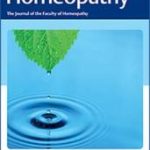Elisabetta Bigagli, Cristina Luceri, Simonetta Bernardini, Andrea Dei and Piero Dolara
Extremely low copper concentrations affect gene expression profiles of human prostate epithelial cell lines
Chem Biol Interactions, 2010, 188 (1), 214-219
Although cellular copper metabolism is tightly regulated through a variety of copper transport proteins and chaperones, disturbances in copper homeostasis are involved in several pathological disorders. The aim of this study was to evaluate the effects of extremely low copper concentrations on gene expression profiles of a line of human prostate epithelial cells (RWPE) which grows in the absence of fetal calf serum, a source of variable and unpredictable copper. Cells were exposed to copper(II) sulfate for 24 h at concentrations varying from 10−6 to 10−17 M and untreated reference cells were exposed to the same volume of copper-free water. Relative gene expression variations between copper-treated and control cells were studied with microarray technology using the Whole Human Genome Array from Agilent. Microarray data demonstrated that copper added to the medium varied gene expression at all concentrations tested. Many genes belonging to functional gene families were modulated by copper, some dose-dependently. Amongst these genes metallothioneins (MT1A and MT2A) were over-expressed at all copper concentrations, MT1M was up-regulated between 10−6 and 10−9 M, while MT1B, MT1E, MT1G and MT1H were up-regulated between 10−6 and 10−14 M. The heat shock protein (HSP) gene family showed similar behavior: some HSP genes were constantly up-regulated by copper (HSP90Ad, HSP90B1 and HSPD1) and others only at higher concentrations (HSP90AB1 and HSPA8). Reverse-transcription-PCR analysis, performed on four different genes on five biological replicates for selected genes, on each copper concentration tested, confirmed the trend observed in microarray results. In conclusion, we unexpectedly observed a modulation of gene expression even at extremely diluted copper concentrations, similar to that induced by toxic concentrations, possibly as a result of very tight control of free copper(II) levels inside the cells.





